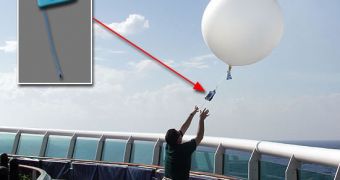The US Department of Defense is more and more interested in using near-space balloons for red alert exercises, which can be used to temporarily restore communications in areas affected by natural disaster or industrial accidents.
Actually, they don't call them "near-space" anymore, they switched to "high-altitude" in an effort to avoid defining where space begins, as Lt. Col. Patty Tuttle, commander of the Arizona Air National Guard's Second Detachment, explained.
They deployed them in a training exercise, where they simulated an earthquake that wiped out existing communications infrastructure in Hilo, Hawaii, from June 18 to 20. Tuttle's unit is the only military organization specifically trained and equipped for high-altitude missions.
Lack of communication right after a natural disaster like a tropical depression, an earthquake, a hurricane, a tornado, a tsunami, a wildfire, or even a human terrorist attack is the main cause of the chaos that is created in the aftermath and many people lost their lives because search and rescue teams couldn't be announced and guided towards them.
The unit is working with a system called Combat SkySat, which is built by Space Data Corp. of Chandler, Arizona. The balloons can operate at altitudes from 65,616 feet (20,000 meters) to about 101,706 feet (31,000 meters).
Equipped with communications transmitters, much like cellphone base stations, these balloons ensure that communication channels remain open by retransmitting the signals, when critical communication and information infrastructure have taken heavy damage or are out of order.
Assisting in rescue operations is only part of their missions, as they will primarily be used by troops operating in an urban setting or mountainous terrain who would not normally be able to access line-of-sight communications signals, as Tuttle explained.
An important contract was signed with the US Air Force, with a total possible value of $49 million, proving that the military really consider these balloons a valuable technology, since each costs around $10,000.

 14 DAY TRIAL //
14 DAY TRIAL //